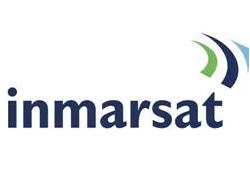Mining poised for rapid IoT adoption as it seeks to eliminate workplace hazards, new research finds

The health and safety of staff stands to be one of the biggest beneficiaries of the mining industry’s move towards automation and the Internet of Things (IoT), new research by Inmarsat has found.
According to the global mobile satellite company, IoT will play an increasingly important role in helping mining companies meet their obligations to their staff, governments, the environment and shareholders.
In May 2017 market research provider Vanson Bourne interviewed respondents from 100 large mining companies across the globe for Inmarsat’s ‘The Future of IoT in Enterprise – 2017’ report, and found that, despite low current levels of IoT deployment in the mining industry, 40% of organisations have plans to deploy IoT solutions within the next 18 months.
Health and safety emerged as the area in which mining respondents expect to see the most benefits from these deployments, with almost half (44%) expecting IoT to drive improvements to the health and safety of staff. Improving health and safety also emerged as a key driver for IoT deployment, with 43% ranking it as a primary objective for their IoT strategy, just behind monitoring environmental changes (47%) and improving cost effectiveness (44%).
Joe Carr, director of Mining at Inmarsat Enterprise said: “The mining sector has worked over many years towards an industry-wide commitment of Zero Harm. Mines are a uniquely specialised, hazardous environment and as such miners are highly focused on employee safety. IoT solutions can play a significant role by remotely monitoring conditions and gathering data to anticipate and react to potential safety threats.”
“Automation and connected wearable technology represent two of the single best opportunities to address the dangers of the mining environment. IoT technology provides the digital nerve system for a network of automated devices and sensors that adjust to environmental conditions in real-time, meaning that equipment can react to potentially hazardous physical changes onsite rapidly without the need for human intervention, removing staff from potentially dangerous environments.”

Joe Carr
There are also significant benefits to be gained in wearable technology as a solution for ensuring staff health and safety. Wearable sensors can monitor and analyse a wide range of parameters, including sensing for dangerous gases or impact, raising the alarm if staff tracking is outside of acceptable parameters and monitoring worker locations to ensure they don’t enter hazardous areas of the site accidentally.
Carr concluded: “Inmarsat is committed to helping the industry achieve Zero Harm: our founding principle was one of safety and lifesaving, and this heritage is present in everything we do today. Using IoT to reduce fatalities and improve health and safety is only going to be possible if the connectivity provided by satellite technologies to move and analyse data is in place. The big challenge for mines is that they are often situated in some of the most remote parts of the world, away from cellular and terrestrial networks in an ever-changing environment.”
Satellite communications not only offer better coverage and more reliable communication networks, crucial in the event of extreme weather or an emergency, but can provide connectivity in deep, open pit mines and even underground, using repeaters. With up to 99.9% uptime, Inmarsat’s L-band services are enabling IoT solutions in mines globally, even in the most remote and hostile environments.
To view the research microsite and download the full report – ‘The Future of IoT in Enterprise – 2017’ – click here.
Comment on this article below or via Twitter @IoTGN
